 In an address delivered to the Photo Imaging Education Association (PIEA) Conference, Sydney Convention Centre, Sydney, Australia, April 29, 2006, I told the attendees,
In an address delivered to the Photo Imaging Education Association (PIEA) Conference, Sydney Convention Centre, Sydney, Australia, April 29, 2006, I told the attendees,
“At the moment, I’m cranky because this time of year reminds me of my favorite teaching experience of the 21st century. My all-time favorite of those situations was in a program at the Centre d’enseignement professionel de Vevey (CEPV), in the heart of the French-speaking Swiss wine country.
“I’m bilingual/Francophone myself, so I relished these three idyllic two-week teaching stints in the spring of 2002, 2003, and 2004, in a great program at a first-rate facility with fantastic students and amazing colleagues: Arno Rafael Minkkinen, Sarah Moon, Franco Fontana, Duane Michals, Antonin Kratochvil, to name just a few. A visiting teacher’s dream, until the program got destroyed, quite literally, by a cadre of self-serving academic-art bureaucrats.
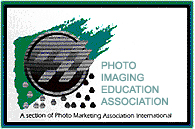 “Within a year the entire program, including their inept radical makeover thereof, had evaporated. Never underestimate the long-term havoc that determined arts-education careerists can wreak in a short time, or the permanent damage (including financial damage) such rampaging functionaries can do to students, faculties, programs, and even entire schools.
“Within a year the entire program, including their inept radical makeover thereof, had evaporated. Never underestimate the long-term havoc that determined arts-education careerists can wreak in a short time, or the permanent damage (including financial damage) such rampaging functionaries can do to students, faculties, programs, and even entire schools.
“Thanks to a student strike and its related website, this situation got widely publicized. But one rarely reads about such disasters in the art-ed and photo-ed press. Doctors bury their mistakes; architects plant ivy; and academics return to their research. Perhaps the time has come to start airing these dirty little secrets.” (Click here for a PDF of that PIEA talk.)
Since we’ve reached the 10th anniversary of that fiasco, I’ve decided to commemorate the occasion by republishing some of the letters and related documents here. I think you’ll find them self-explanatory. They’ve been online since 2005, at fsphoto (a blog the students set up to support the strike website), but not easy to find. This first letter I addressed to the school administration, in response to their solicitation of comments from me on the new program.
•
An Open Letter to the Administration of the Centre d’enseignements professionel de Vevey (CEPV)
Vincent Juillerat Christian Rossier Centre d’enseignements professionel – Vevey Av. Nestlé 1, case postale 1800 Vevey 1 SwitzerlandDear M. Juillerat and M. Rossier:
Thank you for your letter of June 9, 2004, soliciting my response to the ongoing changes in the photography program at the CEPV and inquiring as to my availability to participate in the new version of this program.
Regarding the new program: I was present in Vevey this past June, teaching my own workshop in the program June 1-4 and June 14-18. So I had an opportunity to speak with past and present students from the program (including my own), as well as with some of my fellow visiting faculty (Arno Minkkinen, Franco Fontana, for example). I also attended the meeting held in “l’Aula” [the auditorium] at the school on the morning of June 4, at which the new program was formally presented to the CEPV faculty, staff, and students. I am bilingual/Francophone, and therefore have a reasonably solid understanding of the proposed changes.
To begin with, I should say that I was extremely impressed with the program as I found it when I began teaching therein (spring of 2002), and equally impressed with the quality of students it attracted and the quality, professionalism, and achievements of its graduates. I do not know of a program anywhere that I would consider its equal. (I have taught in photography programs in the U.S., Israel, the Nordic countries, Italy, and elsewhere since 1970, and have visited and observed numerous others.)
Though I have taught at the CEPV for only three years, former students of mine from those classes have already won major awards, earned important commissions, and even had their first monographs published. (Indeed, more than a few of them received prizes and had other notable honors and accomplishments while still enrolled in the program.) [Note: Click here for a site presenting portfolios of work by students in this program from 1997-2004.] This is statistically so unusual that I can only attribute it to the uniqueness of the program as it was initially conceived and presented to its participating students under the directorship of Radu Stern, its founder. [Note: Stern was the Deputy Director of the CEPV, in charge of its School of Applied Arts, which housed the CEPV’s original technical-vocational program and Stern’s creative-photography addition thereto, called the “Formation Professionnelle Supérieure (FPS).”*]
During those workshops of mine I saw some minor adjustments that could be made, and proposed those to the then-director. But nothing struck me as needing major overhaul. So I am, to say the least, perplexed by the radical changes inaugurated by fiat in the new formation. Here in the States we say, “If it ain’t broke, don’t fix it.” A distinguished, world-renowned visiting faculty, students who produce outstanding work that earns them almost immediate professional recognition in the field — I have no idea what anyone could imagine was “broke” in that program that required major repair.
•
I will say more about the proposed new program in a moment. But first I want to comment on what I saw as the extremely unprofessional handling of the transition phase. For one thing, the present visiting faculty was neither consulted nor informed of these changes until they were all in place as faits accomplis. Given that this visiting faculty consists of internationally recognized figures in the field, many of them with reputations as educators also, I find the decision not to consult with them astonishing and revealing.
I have only participated in the program for three years, so I don’t claim to have any long-term insight into it, nor a demonstrable long-term involvement with it. However, Arno Rafael Minkkinen taught at this school even before the program began, and could be considered the founding faculty member of the program. He is internationally known as a major contemporary photographer, and as one of the finest teachers of his generation. His dedication to the CEPV program is unparalleled among all its visiting faculty. The exclusion of Minkkinen from the deliberations over the new program strikes me as profoundly discourteous to him, and deeply unprofessional in every way. I take great offense at that, because Minkkinen is a figure I respect enormously, as do many, many others; he’s made a much larger contribution to the medium than anyone on your permanent faculty. So this disregard of him was disrespectful in the extreme.
•
Second, not only were the students themselves, past and present, not consulted in any way about changes that directly affect their professional futures, but the notification to the students of the de facto revisions came very late in the spring 2004 semester (officially, not until that June 4 meeting I attended). This meant that the first-year and second-year students did not have sufficient time to apply to programs elsewhere for the fall semester if they decided that the new formation didn’t meet their own educational goals.
I know this to be true, because I spoke personally with a number of such unhappy students. In effect, this delay trapped many of them into staying in the program, because you left them with no opportunity to make other arrangements for themselves if they disapproved of the formation’s new direction.
Perhaps that was the covert plan, since I gather you’re already faced with numerous departures of students “voting with their feet,” as we say here. I can think of no other motive for not giving the students — including incoming students who will start the program next fall — adequate advance notice of these changes. In any case, nothing justifies this extremely unprofessional treatment of them, especially coming from a faculty and administration that purportedly intends to increase the “professionalism” of the program.
All of the students with whom I spoke during my stay some weeks ago felt deeply disheartened and demoralized by the treatment to which you subjected them, and indeed betrayed. Not one of them viewed the proposed new formation as an improvement; most of them believed they’d been cheated — tricked into entering one program only to have a quite different and much inferior one forced on them.
I can only call your creation of this situation a demonstration of professional irresponsibility toward those students. It does not speak well of the new administration and permanent faculty of this formation that they treated these students in such a cavalier fashion. Certainly this inexcuseable tardiness hardly demonstrates the vaunted Swiss efficiency; more importantly, it violates the school’s fundamental obligations to its students. The courts will determine whether it also violated the law, when the current suit comes to trial.
So, in short, I am not at all impressed with the new administration’s behavior during this period. I do not think this bodes well for the future of the program.**
(To be continued.)
[* Developed originally on the polytechnic model, the CEPV was effectively a post-secondary trade school in its relation to all the arts and crafts it taught. Even as late as 1993, when Stern took charge of its School of Applied Arts, their photo faculty largely eschewed anything digital, concentrating instead on teaching the skills necessary for traditional analog photography. Stern’s first decision was to multiply by four the number of digital-imaging classes while dramatically increasing the required theoretical courses to 8 contact hours per week of art history, history of photography, image analysis, and communication theory.
In 1997, Stern founded at the CEPV the “Formation Professionnelle Supérieure (FPS),” a unique and innovative post-secondary three-year photography program in which the usual semester-long courses were replaced by a continuous series of workshops in commercial, press, and creative photography, given by a team of internationally recognized photographers chosen for their heterogeneity of approach and opinion. The third year was dedicated to workshops given by picture editors, curators and other museum staffers, gallerists, and theorists. “The goal,” Stern once told me, “was to have a mix of styles and generations that was representative of the world of contemporary photography.”]
[** The new program collapsed within a year due to the dropping out of then-current students and insufficient registration of incoming students.]


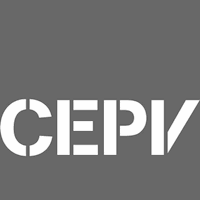
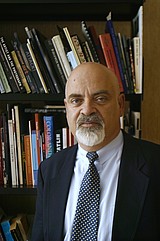
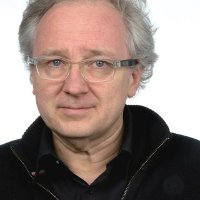
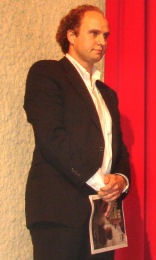
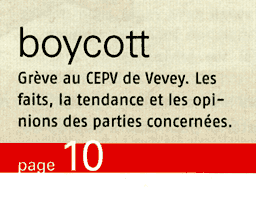
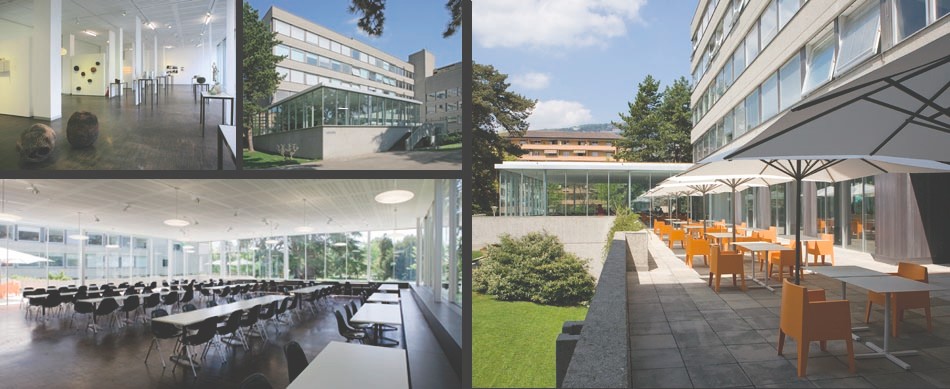




Dear Allan
Something like this happened in Australia to the place I worked at. No fun at all.
I am reminded of a “joke” somebody told me once:
The devil and God were walking down a sidewalk when a strange shape appeared in the distance. “What’s that?” asked the devil.
“That’s the truth,” answered God.
“Give it to me,” said the devil, “and I will organize it.”
Good letter.